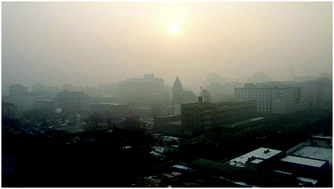当前位置:
X-MOL 学术
›
Energy Environ. Sci.
›
论文详情
Our official English website, www.x-mol.net, welcomes your
feedback! (Note: you will need to create a separate account there.)
Urban haze and photovoltaics†
Energy & Environmental Science ( IF 32.4 ) Pub Date : 2018-08-03 00:00:00 , DOI: 10.1039/c8ee01100a I. M. Peters 1, 2, 3 , S. Karthik 4, 5, 5 , H. Liu 5, 5, 6 , T. Buonassisi 1, 2, 3 , A. Nobre 4, 5, 5
Energy & Environmental Science ( IF 32.4 ) Pub Date : 2018-08-03 00:00:00 , DOI: 10.1039/c8ee01100a I. M. Peters 1, 2, 3 , S. Karthik 4, 5, 5 , H. Liu 5, 5, 6 , T. Buonassisi 1, 2, 3 , A. Nobre 4, 5, 5
Affiliation

|
Urban haze is a multifaceted threat. Foremost a major health hazard, it also affects the passage of light through the lower atmosphere. In this paper, we present a study addressing the impact of haze on the performance of photovoltaic installations in cities. Using long-term, high resolution field data from Delhi and Singapore we derive an empirical relation between reduction in insolation and fine particulate matter (PM2.5) concentration. This approach enables a straightforward way to estimate air pollution related losses to photovoltaic power generation anywhere on the planet. For Delhi, we find that insolation received by silicon PV panels was reduced by 11.5% ± 1.5% or 200 kWh m−2 per year between 2016 and 2017 due to air pollution. We extended this analysis to 16 more cities around the planet and estimated insolation reductions ranging from 2.0% (Singapore) to 9.1% (Beijing). Using spectrum data from Singapore, we projected how other photovoltaic technologies would be affected and found an additional reduction compared to silicon of between 23% relative for GaAs and 42% for a 1.64 eV perovskite material. Considering current installation targets and local prices for electricity, we project that annual losses in revenue from photovoltaic installations could exceed 20 million USD for Delhi alone, indicating that annual economic damage from air pollution to photovoltaic site operators and investors worldwide could be billions of dollars.
更新日期:2018-08-03











































 京公网安备 11010802027423号
京公网安备 11010802027423号